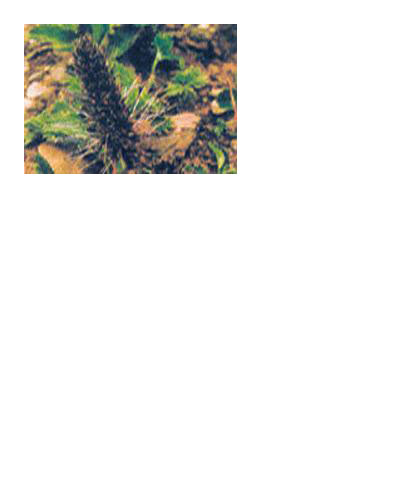Kutki
Latin: Picrorhiza Kurroa
Therapeutic Action:
Picrorhiza Uses & Scientific Evidence For Taking Picrorhiza decreases joint inflammation and can prevent infections. In rat studies, Picrorhiza increased bile production in the liver and protected the animals from damage of several potent liver toxins. The study also showed that Picrorhiza reduced the formation of liver cancer due to chemical exposures. In human trials, Picrorhiza, in combination with other minerals, was successfully used in treating viral hepatitis. Preliminary studies have shown it to be effective in opening the airway in patients with asthma and reducing the severity of asthma. Other studies have shown Picrorhiza to be somewhat effective in reducing the symptoms of rheumatoid arthritis. Picrorhiza Safety & Interaction Information Picrorhiza is generally regarded as safe when taken in the recommended doses; however, mild side effects such as loose stools and colic when unprepared Picrorhiza rhizomes were used. In India, use of this herb by pregnant or nursing women is not discouraged; however, there is no information regarding the safety of taking Picrorhiza while during this time. Safety in young children or those with severe liver or kidney disease is not known. Pharmacology Alcohloic extract of the plant and kutkin possess hepatoprotective activity. Plant is a potent immunostimulant of both cell mediated and humoral immunity and exhibits choleretic activity in dogs. Picrorhiza kurroa is also benefical in the management of bronchial asthma. Remedies For Protects the liver against hepatotoxins, hepatoprotective properties, Potent antioxidant activity, Modulates liver enzyme levels, anti-inflammatory action anti-allergy action. Protective and therapeutic effects against liver damage have been shown by many investigators in diverse models of liver injury in animals. The crude extract as well as the active principles have been shown to protect the liver from injury due to carbon tetrachloride, paracetamol, galactosamine and alcohol. Marked bile- promoting action has been shown in dogs. The general pharmacology of the plant has been well studied. Anti-inflammatory action and reduction in mast cell degranplation have also been demonstrated. The standard ayurvedic references describe its usefulness as a laxative, liver-stimulant, improving lactation, appetite stimulant, febrifuge and as beneficial in bronchial asthma. The plant and its formulations are widely used in therapy of epidemic jaundice. Clinical studies including double-blind trials have been carried out with the root powder of the plant in patients with viral hepatitis with significant improvement in symptoms like anorexia, nausea and vomiting. There was a concurrent improvement in liver functions. Open trials in bronchial asthma have given encouraging prophylactic response with prolonged administration. Indications (Uses): portal hypertension, ascites, fever, hiccoughs, chronic constipation, renal failure, cirrhotic changes, HIV, rheumatic conditions, CFS, jaundice, hepatitis A (infectious) or B C, cirrhotic changes ,lipomas, gall stones, CFS, cirrhotic changes from alcohol, placque on arteries, gall stones, eczema, peptic ulcer, arteries, rheumatism, immune deficiency, fever, infectioin, pneumonitis, pulmonary congestion, cold, cough, HIV, EBV, chronic hiccough from CHF, renal failure, uremia, chronic constipation from gases, ascites, spleenomegaly, renal failure, hepatomegaly K = dropsy, snakebit, scorpion sting, disease of liver and spleen including jaundice and anemia, constipation due to scanty intestinal secretions, bilious fever as decoction of kutki, neem, licorice, raisins dyspepsia (kutki, vaca, haritaki, citrak with cow's urine in dose of 28ml, scorpion sting, non-specific fever such as with constipation, fever of elephantiasis, infective hepatitis with jaundice, bronchial asthma, hi serum cholesterol and long coagulation times Medicinal Uses Anthelmintic; Antiinflammatory; Antiseptic; Bitter; Cholagogue; Emmenagogue; Febrifuge; Refrigerant; Stomachic; Tonic. This species is one of several that are the source of the medicinal gentian root[46, 61], the following notes are based on the general uses of G. lutea which is the most commonly used species in the West[K]. Gentian root has a long history of use as a herbal bitter in the treatment of digestive disorders and is an ingredient of many proprietary medicines. It contains some of the most bitter compounds known and is used as a scientific basis for measuring bitterness[238]. It is especially useful in states of exhaustion from chronic disease and in all cases of debility, weakness of the digestive system and lack of appetite[4]. It is one of the best strengtheners of the human system, stimulating the liver, gall bladder and digestive system[238], and is an excellent tonic to combine with a purgative in order to prevent its debilitating effects[4]. The root is anthelmintic, anti-inflammatory, antiseptic, bitter tonic, cholagogue, emmenagogue, febrifuge, refrigerant, stomachic[4, 7, 9, 14, 21, 165, 238]. It is taken internally in the treatment of liver complaints, indigestion, gastric infections and anorexia[238]. It should not be prescribed for patients with gastric or duodenal ulcers[238]. The root is harvested in the autumn and dried for later use[4]. It is quite likely that the roots of plants that have not flowered are the richest in medicinal properties[4].
References:
- Nadkarni, Vol I, Pages 573-576
- Leung & Foster, Page 268
- Dukes. P 207
- Paranjape Pages 130-132
- Nadkarni, Vol I, P 953-955
- Paranjape Pages 130-132
Used in:
- Livnol Tablets
- Malarin Tablets
- Citazil Syrup
- Livonex Syrup
- Livonex Drops

Copyright 2013 Unexo Laboratories Pvt. Ltd. All Rights Reserved. Designed & Developed By: Credence Technologies


